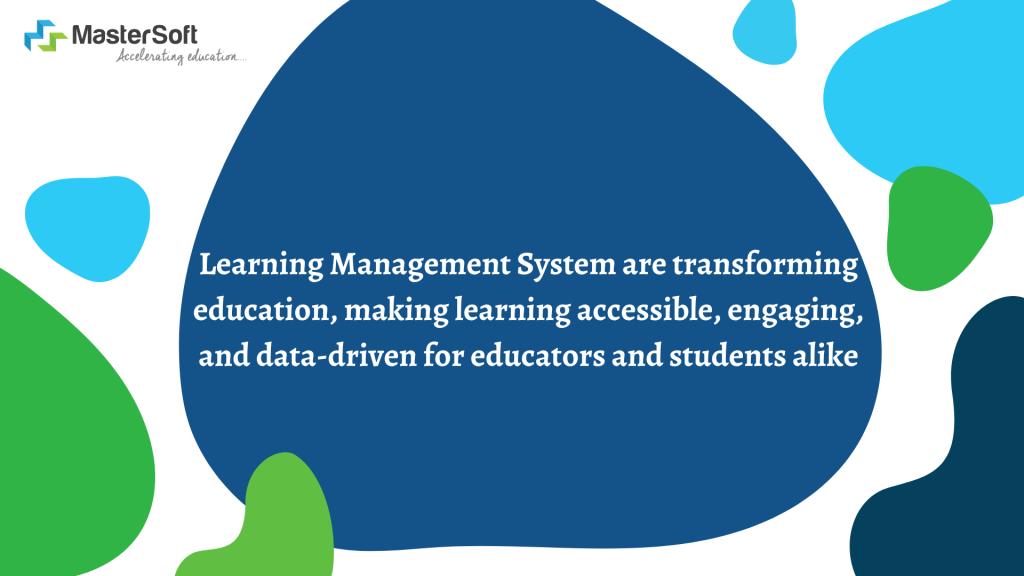How Learning Management System Empower Educators

The traditional classroom, while valuable, has limitations. In today’s dynamic learning environment, educators need tools that facilitate engaging instruction, streamline workflows, and personalize learning. Enter the Learning Management System (LMS). An LMS is a software platform that acts as a central hub for educational activities, empowering educators to transform the teaching and learning experience. This blog post delves into the world of LMS platforms, exploring their functionalities, benefits, and how they can revolutionize the way we approach education.
From Chaos to Control: The Need for Learning Management System
Teachers often juggle multiple tasks – lesson planning, grading assignments, communicating with parents, and keeping track of student progress. Traditional methods, like paper-based records and email chains, can be time-consuming and cumbersome. Learning Management Systems offer a solution:
- Centralized Platform: An LMS acts as a single platform for all course materials, assignments, assessments, and communication tools.
- Streamlined Workflows: LMS platforms automate tasks like grading quizzes and distributing materials, freeing up valuable time for educators to focus on instruction.
- Enhanced Organization: Resources and activities are organized within the LMS, making it easier for educators to find what they need and stay on top of their courses.
- Improved Communication: LMS platforms provide communication tools for teachers to connect with students and parents, fostering collaboration and engagement.
Under the Hood: The Functionality of Learning Management System
Learning Management Systems offer a range of features that empower educators:
- Content Management: Upload, organize, and deliver various learning materials like documents, videos, presentations, and interactive content.
- Assessment Tools: Create and administer quizzes, assignments, surveys, and discussions to gauge student understanding.
- Communication Features: Facilitate communication between educators, students, and parents through forums, email integration, and real-time chat tools.
- Grading and Feedback: Many LMS platforms offer automated grading tools and features to provide efficient feedback to students.
- Reporting and Analytics: Track student progress, identify areas needing improvement, and measure the effectiveness of learning activities with built-in reporting and analytics tools.
Choosing the Right Fit: Selecting an LMS for Your Needs
With a variety of Learning Management Systems available, choosing the right one for your educational institution requires careful consideration:
- Target Audience: Consider the age and learning styles of your students. Choose an LMS with features and functionalities that cater to their needs.
- Content Management Needs: What types of learning materials will you be using? Ensure the LMS can handle the desired content formats.
- Integration Capabilities: Does the LMS integrate with existing educational software like student information systems or video conferencing tools?
- Ease of Use: An LMS should be user-friendly for both educators and students. Consider the technical skills of your users and choose a platform with intuitive features and proper training resources.
- Security and Privacy: Ensure the LMS has robust security measures to protect student data and intellectual property.
Beyond the Classroom Walls: The Benefits of LMS for Students
Learning Management Systems don’t just benefit educators. Students also reap the rewards:
- Personalized Learning: Some LMS platforms allow for personalized learning paths. Students can access additional resources based on their individual needs and learning styles.
- 24/7 Access: LMS platforms allow students to access course materials and complete assignments anytime, anywhere, from any device.
- Enhanced Engagement: Interactive features like quizzes, discussion forums, and collaborative activities can boost student engagement and make learning more enjoyable.
- Improved Organization: Students can easily find course materials, track assignments, and manage their learning schedules within the LMS.
- Communication and Collaboration: LMS platforms foster communication and collaboration between students, allowing them to connect with peers and ask questions outside of class time.
Real-World Examples: How Educators are Using LMS Platforms
Learning Management Systems are being used in various educational settings to enhance teaching and learning:
- K-12 Schools: Teachers can use LMS platforms to deliver differentiated instruction, provide online resources for flipped classrooms, and facilitate communication with parents.
- Higher Education: Universities can leverage LMS platforms to manage large courses, distribute assignments, and provide online discussion forums for student interaction.
- Corporate Training: Companies can use LMS platforms to deliver online training modules, track employee progress, and assess learning outcomes.
Read More Here



